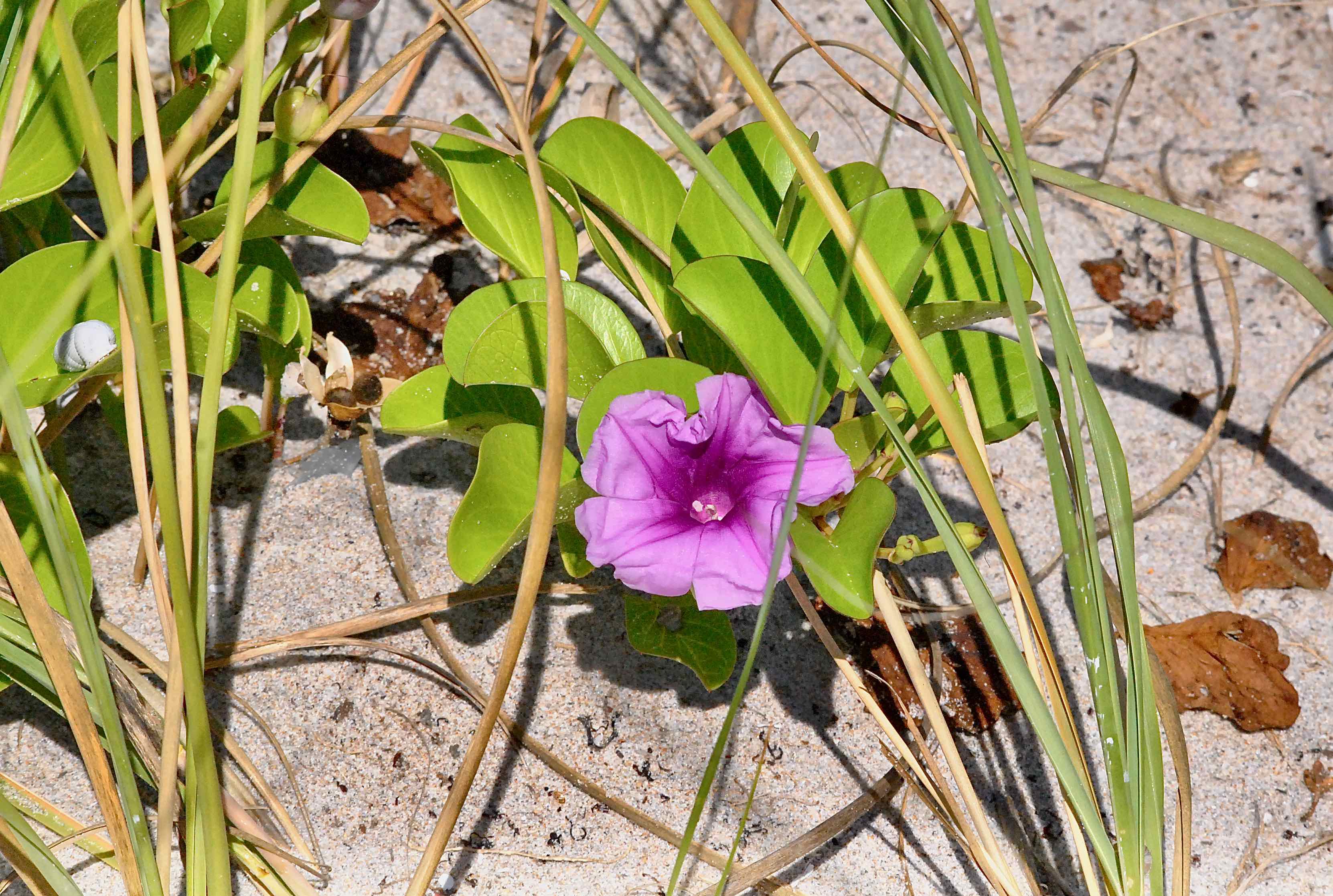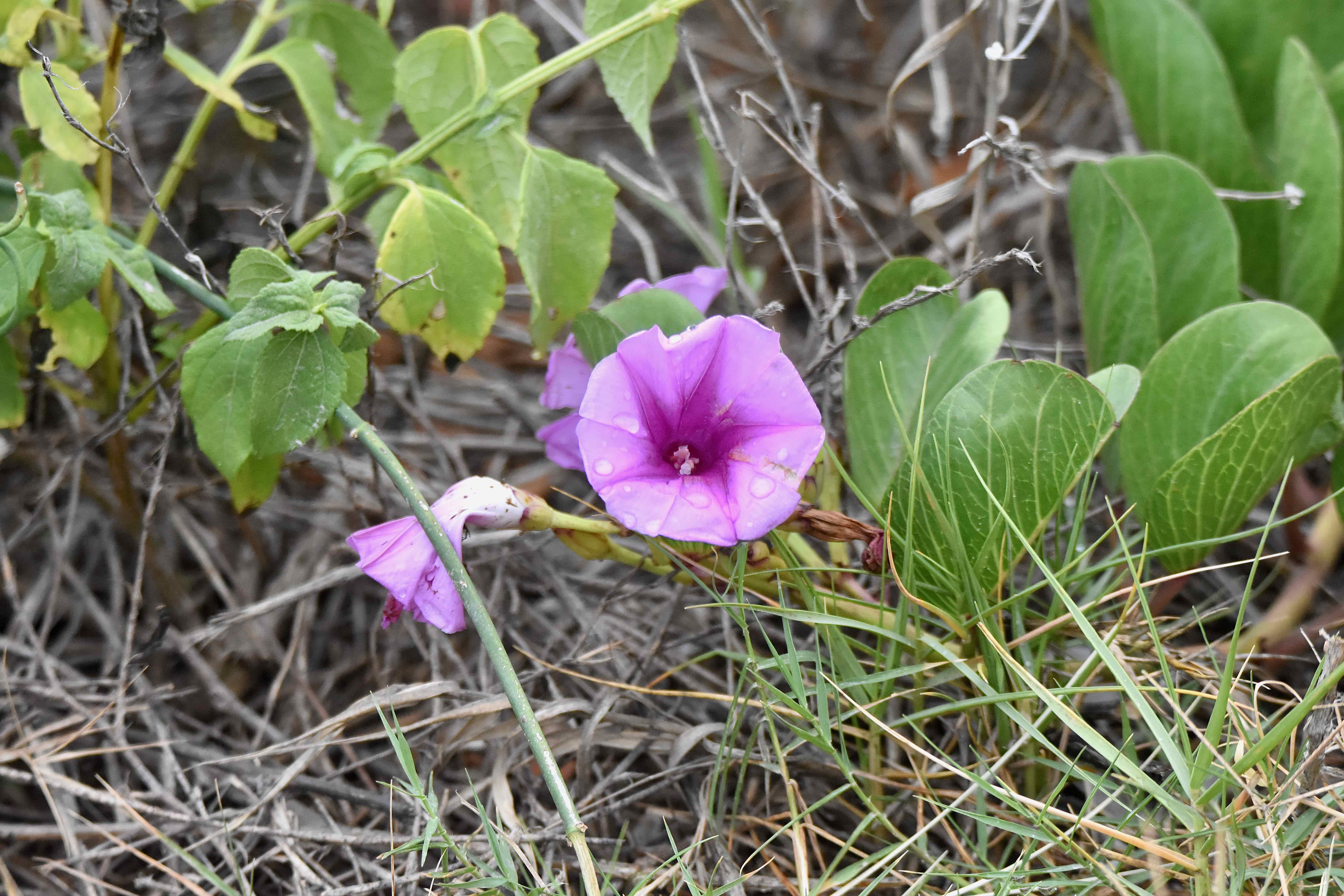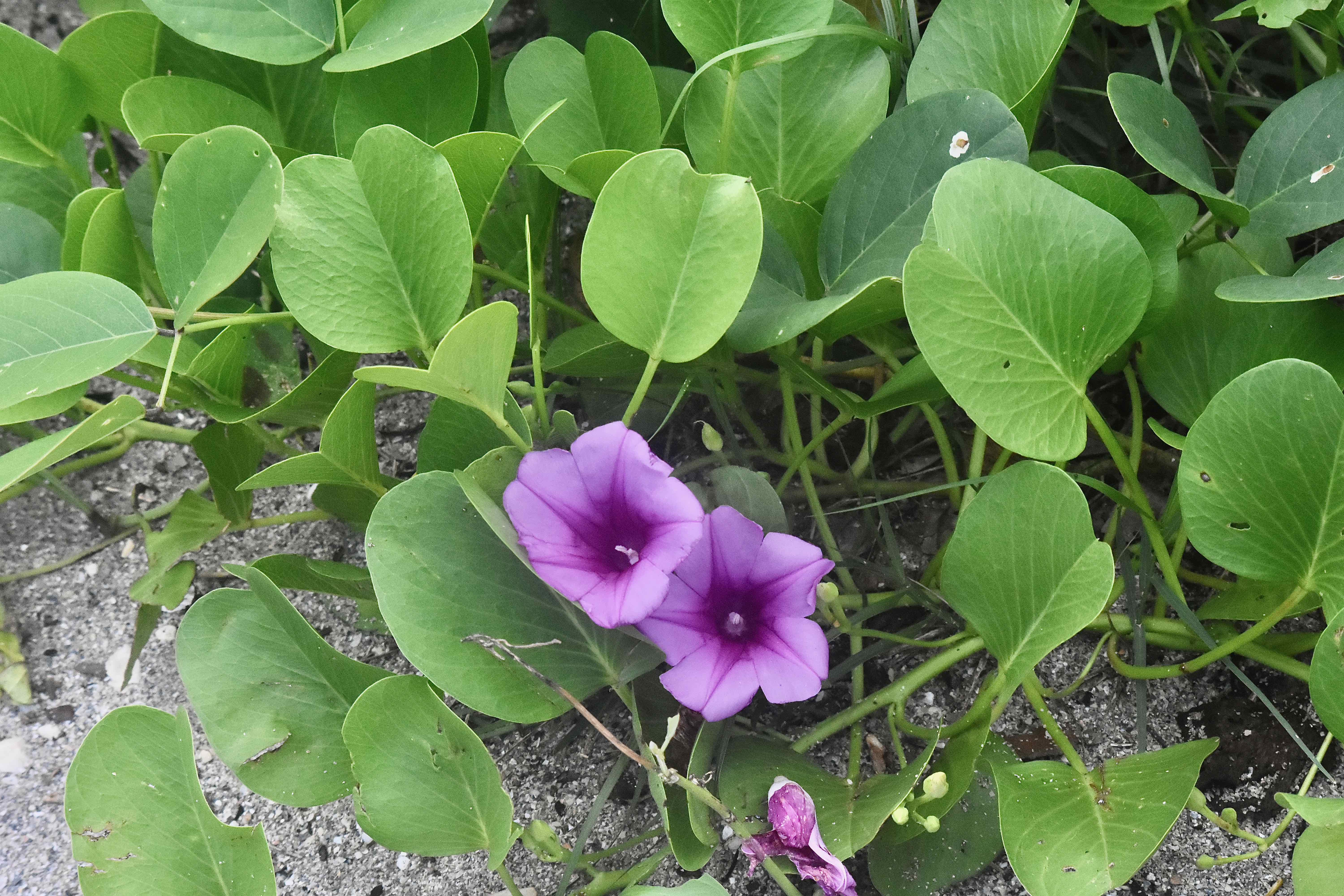
Railroad vine, photographed at Gulfstream Park, Gulfstream, Palm Beach County, in September 2013.
Railroad vine is a rather pedestrian name for a plant with such a beautiful flower. But it does accurately describe the rest of the plant and it's long, straight stolons — horizontal stems — that hug the ground.
It's a Florida native found in beach dunes throughout the Sunshine State, though less so in the Panhandle. It's also native to the Atlantic and Gulf coasts from Georgia to Texas, and Hawaii. But it's a "pantropical" plant found in warmer places around the globe, from Japan and the Philippines and other parts of Asia to Africa, Australia and the Pacific islands. And everywhere railroad vine is found, it plays a critical role in holding beach dunes together. It's often cultivated for just that purpose.
Its scientific name is Ipomoea pes-caprae, and it is a member of the morning glory family. Pes-caprae means goat's foot, and is in reference to the shape of its leaves. The pink-purple flowers, which can be be 2-and-a-half inches wide, bloom in the evening, peak in the morning but fade by afternoon, attracting myriad pollinators in the meantime. The throat of flower has the star pattern that's a hallmark of morning glories. Railroad vine blooms year round but peaks in mid-summer.
But it's the vine itself that is the real value of the plant. It can shoot out 30 feet or more along the ground, even exceeding 100 feet, sending down roots at nodes. It can form mats that cover large swaths of ground. It's usually found growing above the high tide mark, its deep taproot helping to hold the dune together. And it's a tough plant, able to survive shifting sands that can bury the stem at times. It is drought and salt tolerant but limited when it comes to cold temperatures, which is why it only grows in tropical and subtropical places. Besides the beach, we've also seen it growing a bit inland in coastal scrubs.
The leaves are simple, arranged alternately along the stem, leathery in texture and smooth to the touch. They have two lobes at the terminal end and are shaped like a cleft hoof. Railroad vine provides cover for the endangered gopher tortoise, Florida beach mouse, scrub jay and kestrel.
Railroad vine is also a staple in folk medicine in places where it's found. Juice from the leaves are used to treat jellyfish stings. It's used in baths to remove evil spirits, to treat rheumatism, to improve digestion and as a tonic. But it's medical potential goes far beyond. Scientific research has shown railroad vine to have antioxidant, anti-inflammatory, anticancer, analgesic properties and a whole lot more.
Other common names include goat's-foot vine, bayhops, Brazilian bayhops and beach morning glory. It is a member of Convolvulacease, the morning glory family.
Click on photo for larger image
U.S. Department of Agriculture Distribution Maps



Links for Railroad Vine



